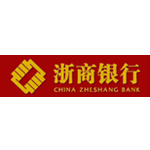BANK OF CHINA(601988)
Search documents
四川中行为当地文旅发展注入金融动能
Zhong Guo Jin Rong Xin Xi Wang· 2025-09-28 11:53
Group 1 - The core viewpoint of the article highlights the initiatives taken by the Bank of China Sichuan Branch to stimulate cultural and tourism consumption during the National Day holiday, aiming to support the development of the tourism sector in Sichuan [1][2] - The Sichuan Bank showcased its "Travel Benefits" financial services, collaborating with over 40 well-known food streets and tourism platforms to offer discounts to consumers [2] - The bank launched the first domestic cross-border comprehensive service app "Laihua Tong," which includes features for visa processing, entry procedures, payment strategies, transportation, and tax refunds for foreign visitors [2] Group 2 - The Sichuan Bank is enhancing its physical branches with thematic upgrades and modern technology to create immersive financial experiences related to cultural and tourism services [2] - The bank's Chengdu branch serves as a model for the integration of cultural tourism and finance, featuring various themed exhibition areas and showcasing achievements in supporting the tourism industry [2] - Future plans include increasing financial service offerings and credit support for enterprises in the cultural tourism industry, along with innovating financial products and optimizing service models [2]
中国银行内蒙古自治区分行原副行长刘明被开除党籍
Bei Jing Ri Bao Ke Hu Duan· 2025-09-28 11:15
转自:北京日报客户端 据中央纪委国家监委驻中国银行纪检监察组、辽宁省纪委监委消息:日前,经中央纪委国家监委批准, 中央纪委国家监委驻中国银行纪检监察组、辽宁省葫芦岛市监委对中国银行内蒙古自治区分行原党委委 员、副行长刘明严重违纪违法问题进行了立案审查调查。 经查,刘明丧失理想信念,背弃初心使命,对抗组织审查;罔顾中央八项规定精神,接受可能影响公正 执行公务的宴请;违反组织原则,利用职权为他人谋取利益;廉洁底线失守,收受可能影响公正执行公 务的礼品、礼金、消费卡,借操办丧事之机敛财;贪欲膨胀,利用职务便利以及职权或地位形成的便利 条件为他人在信贷审批等方面谋取利益,非法收受巨额财物;违法发放贷款,给国有资产造成重大损 失。 刘明严重违反党的政治纪律、中央八项规定精神、组织纪律、廉洁纪律,构成严重职务违法并涉嫌受 贿、违法发放贷款犯罪,且在党的十八大后不收敛、不收手,性质严重,影响恶劣,应予严肃处理。依 据《中国共产党纪律处分条例》《中华人民共和国监察法》《中华人民共和国公职人员政务处分法》等 有关规定,经中国银行党委研究,决定给予刘明开除党籍处分;经中央纪委国家监委驻中国银行纪检监 察组研究,决定按规定取消其退 ...
工行、农行、中行、建行、交行、邮储银行同日公告
Jing Ji Wang· 2025-09-28 09:19
Core Viewpoint - Major banks in China have decided to abolish their supervisory boards, transferring their functions to the audit committee of the board of directors, which is seen as a move to optimize corporate governance and reduce costs [7][8][9] Group 1: Decision and Implementation - The five major banks have announced that they will no longer establish supervisory boards, a decision approved at the 2024 annual general meeting held on June 27, 2025, and recently sanctioned by the National Financial Regulatory Administration [7] - Postal Savings Bank has also proposed to abolish its supervisory board and related committees, with the audit committee of the board taking over these responsibilities, pending shareholder approval [8] Group 2: Rationale and Expert Opinions - Industry experts suggest that the functions of supervisory boards overlap with those of the audit committee, particularly the independent directors, making the abolition a strategic choice to enhance governance flexibility and efficiency [8] - The decision to eliminate supervisory boards is viewed as a way to maintain effective corporate governance while lowering governance costs, according to a leading expert from the Shanghai Financial and Development Laboratory [8] Group 3: Regulatory Framework - The revised Company Law allows companies to establish audit committees within the board of directors to perform the functions of supervisory boards, a change that has been recognized by the National Financial Regulatory Administration [9] - Besides the six major banks, several other national joint-stock banks and local commercial banks have also announced the abolition of their supervisory boards [9]
中国银行山东省分行:金融活水润沃土 守护乡村好“丰”景
Zhong Guo Jin Rong Xin Xi Wang· 2025-09-28 08:34
Core Insights - The Shandong Branch of China Bank has significantly increased its agricultural loan support in rural areas, with a loan balance exceeding 170 billion yuan and an addition of over 23 billion yuan this year, contributing to rural revitalization efforts [1][2] Agricultural Loan Support - As of the end of August, the bank's loans in key agricultural sectors, including grain, soybeans, and oilseeds, reached nearly 10 billion yuan, with an increase of over 1.8 billion yuan since the beginning of the year [2] - The bank has provided timely financial support to agricultural enterprises, such as Shandong Shunfeng Agricultural Development Co., which received a 2 million yuan loan to address short-term liquidity issues [2][3] Product Innovation and Services - The bank has launched various specialized financial service products for rural clients, including "Zhaoyuan Peanut Loan," "Anqiu Ginger Loan," and "Jinxiang Garlic Loan," resulting in a total of nearly 26 billion yuan in inclusive agricultural loans, with an increase of over 5.2 billion yuan this year [4][6] - The "Anqiu Ginger Loan" has been particularly successful, providing 36 million yuan in credit to nearly 30 ginger industry clients within four months of its launch [5] Focus on Local Agricultural Needs - The bank actively engages with local agricultural departments and farmers to understand their financial needs, exemplified by its support for the pear industry in Yantai Laiyang, where it provided a 500,000 yuan loan to a company for purchasing fertilizers [7] - The bank aims to enhance its service mechanisms and capabilities to better support rural revitalization and contribute to the agricultural sector's high-quality development [8]
固收点评20250928:二级资本债周度数据跟踪-20250928
Soochow Securities· 2025-09-28 07:29
I. Report Industry Investment Rating No information about the report industry investment rating is provided in the given content. II. Core View of the Report The report provides a weekly data tracking of secondary capital bonds from September 22 to September 26, 2025, covering primary market issuance, secondary market trading, and valuation deviation of individual bonds [1][2][3]. III. Summary by Relevant Catalogs 1. Primary Market Issuance - There were no new issuances of secondary capital bonds in the inter - bank market and the exchange market during the week from September 22 to September 26, 2025 [1]. 2. Secondary Market Trading - **Trading Volume**: The total weekly trading volume of secondary capital bonds was approximately 229.9 billion yuan, an increase of 52.1 billion yuan compared to the previous week. The top three bonds in terms of trading volume were 25 Agricultural Bank of China Secondary Capital Bond 03B(BC) (54.049 billion yuan), 25 Agricultural Bank of China Secondary Capital Bond 03A(BC) (16.307 billion yuan), and 25 Industrial and Commercial Bank of China Secondary Capital Bond 01BC (7.88 billion yuan) [2]. - **Trading Volume by Region**: The top three regions in terms of trading volume were Beijing, Shanghai, and Fujian, with trading volumes of approximately 189 billion yuan, 12.7 billion yuan, and 7.9 billion yuan respectively [2]. - **Yield to Maturity**: As of September 26, the yield to maturity of 5Y secondary capital bonds with ratings of AAA -, AA +, and AA increased by 17.93BP, 17.31BP, and 16.31BP respectively compared to the previous week; for 7Y secondary capital bonds, the increases were 18.31BP, 18.26BP, and 18.26BP respectively; for 10Y secondary capital bonds, the increases were 16.19BP, 16.82BP, and 16.82BP respectively [2][10]. 3. Valuation Deviation of Top 30 Individual Bonds - **Overall Situation**: The overall valuation deviation of the weekly average trading price of secondary capital bonds was not significant during the week from September 22 to September 26, 2025. The proportion of discount transactions was less than that of premium transactions, and the discount range was smaller than the premium range [3]. - **Discount Bonds**: The top three bonds with the highest discount rates were 17 Fushun Bank Secondary (- 0.3988%), 21 Deqing Rural Commercial Bank Secondary (- 0.3851%), and 22 Yongcheng Rural Commercial Bank Secondary (- 0.3606%). The Zhongzheng implicit ratings were mainly AAA -, AA +, and AA, and the bonds were mostly distributed in Beijing, Shanghai, and Guangdong [3][12]. - **Premium Bonds**: The top three bonds with the highest premium rates were 24 China Construction Bank Secondary Capital Bond 02B (1.2298%), 24 Guangfa Bank Secondary Capital Bond 01 (0.8398%), and 23 China Construction Bank Secondary Capital Bond 02B (0.8050%). The Zhongzheng implicit ratings were mainly AAA -, AA +, and AA -, and the bonds were mostly distributed in Beijing, Shanghai, and Guangdong [3][13].
中行河南省分行成功承办郑州国际金融发展对话活动
Huan Qiu Wang· 2025-09-28 04:42
来源:环球网 活动期间,中国银行河南省分行与人保财险河南分公司联合发布支持河南跨境贸易行动方案,为企业拓 展海外市场提供更加便捷高效的金融服务支持。 在签约环节,郑州市政府与中银、工银、农银、建信、交银等5家金融资产投资公司(AIC)进行战略 合作签约,将为郑州引入更多金融活水、提供多元资本支持,助力经济高质量发展。 会上,郑州中瀛扶摇赋豫基金项目正式启动。中国银行河南省分行、中银金融资产、河南国有资本运营 集团、郑州市投资集团、郑州经开资本集团签署项目合作协议。中银资产联合省市区三级投资主体,用 实际行动支持中部地区崛起、服务郑州国家中心城市建设。 9月26日,郑州国际金融发展对话暨中国(河南)-东盟合作发展新机遇交流活动在郑州举行。此次活动 由郑州市政府、河南省委金融办、省商务厅主办,中国银行河南省分行等承办,旨在通过金融创新/跨 境金融赋能高水平对外开放,助力河南-东盟区域大市场建设。 河南省政府、郑州市政府和中国银行总行有关领导出席活动,300余位海内外金融学家和资深专家、政 金企代表齐聚一堂,共商金融开放创新路径,共绘区域合作发展蓝图。 此次活动立足河南区位优势和产业基础,聚焦"金融创新/跨境金融助 ...
中国河南国际集团董事长秦岭:做强开放平台,服务豫企出海、外企来豫投资兴业
Xin Lang Cai Jing· 2025-09-28 02:50
Group 1 - The 15th China Henan International Investment and Trade Fair was held in Zhengzhou from September 26 to 28 [1] - China Henan International Group signed a cooperation agreement with Bank of China Vientiane Branch to deepen cross-border financial cooperation [1] - The partnership aims to inject financial momentum into the group's stable expansion in Southeast Asian markets, particularly in Laos [1] Group 2 - The collaboration is expected to enhance the development of Henan and ASEAN to a higher level [1]
“郑州国际金融发展对话”暨中国(河南)—东盟合作发展新机遇交流活动举行
Zheng Zhou Ri Bao· 2025-09-28 01:09
(据《河南日报》) 杨军在致辞中说,多年来,中国银行扎根中原大地,聚焦做好金融"五篇大文章",全力支持河南推 进国家重大战略实施、重点项目建设,已成为服务河南实体经济的主力军和维护金融稳定的压舱石。中 国银行愿在河南省委、省政府指导支持下,持续深化与各地各部门密切合作,通过金融赋能融入服务全 国统一大市场建设,在金融创新中推动产业提档升级,在跨境金融服务中促进高水平对外开放,为河南 落实"两高四着力"重大要求、扛稳经济大省挑大梁重任作出更大贡献。 中国社会科学院学部委员余永定、香港贸易发展局中国内地总代表钟永喜、英国国家经济社会研究 院研究员保罗·莫蒂默-李、东亚银行(中国)行长毕明强、中国银行研究院院长陈卫东作主旨演讲。柬 埔寨财经部政策局副局长蒋国丰、汇丰银行环球研究大中华区首席经济学家刘晶等国内外专家学者和金 融机构负责人出席活动,围绕金融创新、跨境金融深入交流。 活动现场,中国银行河南省分行—人保财险河南分公司共同支持河南跨境贸易行动方案启动发布, 一批金融领域合作项目集中签约。 9月26日,"郑州国际金融发展对话"暨中国(河南)—东盟合作发展新机遇交流活动举行。省长王 凯出席。 省委常委、副省长张敏 ...
中国银行“跨境E贷”精准匹配外贸小微企业融资需求


Zheng Quan Ri Bao Zhi Sheng· 2025-09-27 15:36
深圳某国际物流有限公司是一家专注于国际物流领域的综合服务企业,公司成立以来持续优化运营体 系、拓展全球网络,与国内外知名企业建立了长期稳定的合作关系。今年以来,受相关因素影响,企业 经营成本持续走高,回款账期进一步拉长,加剧了资金周转压力。受制于可抵押资产少、财务报表难以 完整体现真实经营状况等问题,企业面临融资困境。 ■本报记者 郝飞 近期,中国银行推出中银普惠"跨境E贷"专属服务方案,聚焦海关单一窗口、国际结算、跨境电商等场 景定制化线上产品,通过"一客群一策略"的定制化专属服务模式,为不同特征的小微外贸企业提供适配 的金融支持。 在深圳,中国银行积极助力国际结算客户进入国际市场。 中国银行获知企业融资需求后,主动对接了解其经营、财务及进出口情况,并针对产品申请、额度、还 款等企业关心的问题进行专业解答。此外,中国银行通过积极制定服务方案,开辟绿色信贷审批通道, 为企业核定信用总量并顺利解决了企业的融资难题。 在外贸活跃的广州,中国银行精准匹配外贸企业融资需求。 广州市某电子电器有限公司是一家专注于家电零配件一体化服务的出口型企业,具有超过15年的行业资 源与运营经验。但随着海外业务的发展,该企业有了更多 ...
固收深度报告20250927:从42家上市银行半年报解读银行债券投资“攻守道”





Soochow Securities· 2025-09-27 14:32
1. Report Industry Investment Rating No information about the report industry investment rating is provided in the given content. 2. Core Viewpoints of the Report - External environment factors such as interest rate fluctuations, bond supply - demand, and policy orientation jointly impact bond investment returns. In H1 2025, the bond investment of 42 listed banks showed certain characteristics in scale, structure, and profit and loss, but there are still challenges in maintaining stable returns in the future [1]. - The overall bond investment scale of 42 listed banks expanded steadily in H1 2025. There were differences in the investment structure among different types of banks, with state - owned banks and city commercial banks having stable growth in the bond allocation portfolio, while joint - stock banks and rural commercial banks increased their efforts in the bond trading portfolio. The bond investment portfolio generally presented a pattern of "stable foundation and flexible gain" [1]. - The coupon income of 42 listed banks was generally stable in H1 2025 but showed a slight year - on - year decline. The fair value change loss was significant, and the investment income increased. However, the bond investment of the banking industry still faces pressure to maintain stable returns [1]. 3. Summary According to the Table of Contents 3.1 42 Listed Banks' Bond Investment Volume - **Overall Bond Investment Scale: Steady Expansion**: In H1 2025, the total scale of the three types of bond - type financial assets of 42 listed banks showed a steady expansion trend. The growth of debt investment - type financial assets measured at amortized cost was relatively slow, while the growth of trading financial assets measured at fair value and included in current profits and losses was relatively large, indicating that banks increased the proportion of trading positions [9]. - **Differentiated Bond Investment Distribution Structures among Different Bank Types**: In H1 2025, state - owned banks and city commercial banks showed stable growth in the bond allocation portfolio, which may be related to their participation in the primary - market issuance of important national and regional bond varieties. Joint - stock banks and rural commercial banks slightly weakened their bond allocation power but significantly increased their efforts in the bond trading portfolio, showing a differentiated feature of "stable allocation by large banks and prominent trading flexibility by small and medium - sized banks" [13]. - **Bond Investment Allocation Tilted towards Government - Related Bonds**: In H1 2025, commercial banks increased their allocation of government - related bonds, with an average month - on - month increase of about 10% for state - owned banks, joint - stock banks, and city commercial banks, and a slightly smaller increase for rural commercial banks. The allocation of financial bonds and other bonds was differentiated. All banks held a relatively large scale of government - related bonds, followed by financial bonds and credit - related bonds [18]. - **Correlation between Financial Asset Types and Bond Variety Structures**: The banking industry maintained a stable growth of interest - rate bonds in the bond allocation portfolio and increased the allocation of credit bonds, while the allocation of financial bonds was relatively weak. In the bond trading portfolio, interest - rate bonds and financial bonds were the core varieties, with a more significant increase than credit bonds, showing a "stable foundation and flexible gain" pattern [22]. 3.2 42 Listed Banks' Bond Investment Profit and Loss - **Coupon Income: Generally Stable and Still the Main Source of Income**: In H1 2025, the total coupon income of 42 listed banks decreased slightly year - on - year. Although the scale of held - to - maturity bonds increased, the decline in the coupon rate of newly issued bonds led to a decrease in coupon income. In the future, coupon income is still expected to be the main source of bond investment income for commercial banks [26]. - **Fair Value Change Loss: Losses in the Trading Level**: In H1 2025, the total fair value change loss of 42 listed banks decreased significantly year - on - year, indicating that it was difficult to obtain capital gains through short - term trading in the volatile bond market, and there were floating losses in bond trading [28]. - **Investment Income: Growth in All Bank Types**: In H1 2025, the actual investment income of 42 listed banks in the bond field increased significantly year - on - year. Although the book value appreciation of bond - type trading financial assets and other debt investment - type financial assets was not as good as that of the previous year, banks could still increase their investment income by selling floating - profit old bonds and waiting for the maturity of high - coupon bonds [31]. 3.3 Attribution and Summary - **External Environment Driving Factors: Interest Rate Fluctuations, Bond Supply - Demand, and Policy Orientation Jointly Impact Bond Investment Returns**: In H1 2025, the "more adjustments and fewer opportunities" bond market environment led to a general decline in the prices of existing bonds, resulting in a significant year - on - year decline in the fair value change loss of listed banks' bond investment. The supply of national bonds, local government bonds, and policy - based financial bonds increased, but the coupon rate of newly issued bonds decreased, leading to a decline in coupon income. Regulatory policies indirectly affected bond investment performance [35]. - **Banking Industry's Bond Investment Pressure and Future Outlook** - Overall Income Shows a Positive Trend but There Are Still Hidden Concerns: In H1 2025, the actual bond investment income of 42 listed banks increased slightly year - on - year, but the coupon income faced downward pressure in the interest - rate downward cycle, and it was more difficult to obtain spread income through band trading. Since H2 2025, the "stock - strong and bond - weak" pattern has emerged, and the loss caused by fair value change will be more obvious [3]. - Different Bank Types Show Differentiated Performance, and State - owned Banks' Pressure Is Relatively Controllable: State - owned banks can maintain a certain profit - making ability in the low - interest - rate volatile bond market due to their advantages in bond allocation and trading portfolios. Joint - stock banks, city commercial banks, and rural commercial banks are more vulnerable, and they may increase their capital allocation in the equity market, commodity market, and related structured fixed - income products in the future [3].


